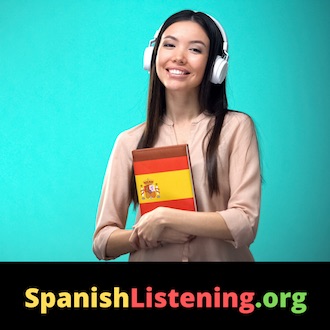No Homework in Norway
Gyri talks about the education system in Norway.
Viyasan: So Gyri, can you tell me a little bit more about the lifestyle of school in Norway? For example, I've heard you guys don't have homework, don't have standardized tests. Tell me a little bit more about how school is in Norway.
Gyri: Yeah. So, we don't have a lot of homework, that's true. When I was little, or in grade school, we had homework, but not too much. I think they changed it recently so that they almost have no homework anymore.
Viyasan: Okay.
Gyri: Also, in junior high I remember that we did have homework, but it was like, it didn't really matter if you did it or not. So it was, how I remember grade school and junior high is that it's pretty relaxed.
Viyasan: So that's very interesting, because I'm sure all around the world students who go to school have lots of homework, they have lots of classes to take, they're probably in classes for lots of hours in a day. That's pretty cool, like, do you think it's working? What are your thoughts on it?
Gyri: Well, I think Norway really wants to focus on that if we have a lot of free time then we learn better, like we'll stay motivated instead of like having to go to school and then also having to work with school when you get home. Like you should ... Norwegians, I think, mostly agree that you do school at school, and then you do other things after so you don't have to think about school all the time.
Viyasan: So there's a large emphasis on what you do outside of the classroom.
Gyri: Yeah.
Viyasan: Got it, okay.
Gyri: Yeah, 'cause I think one of the problems that we have in Norway is like motivation, maybe because, like, we're a more relaxed, or we're, yeah, we're more relaxed when it comes to education, other problems show up. So we have a lot of, yeah, we have a problem with pupils that can't focus.
Viyasan: Got it.
Gyri: And we're also, we don't have enough teachers as well. So that's a problem now in Norway, that not enough people are getting their, or becoming teachers, and there are so many students that have other needs than the rest of the students and we don't have enough teachers to follow up on all of them. So that's Norway's focus now, I think.
Viyasan: Got it.
Gyri: To get more teachers, and have like, I think the goal is to have one teacher for every five kids.
Viyasan: Wow.
Gyri: Yeah.
Viyasan: That's intense. Wow.
Gyri: Yeah. So everyone gets the, gets a lot of-
Viyasan: To compare and contrast with Canada at least, and Toronto, in high school there is about one student, or sorry, one teacher per 28 students.
Gyri: Oh, wow.
Viyasan: Students.
Gyri: Yeah.
Viyasan: So it's very tough for the teacher to learn all the names, especially in the first few months, and they have to keep on doing that year, after year, after year, and every year usually it increases. So 28 turns into 30, 30 turns into 33, and so, wow, that's quite intense to see the differences. But how do you think the students are liking that approach of one teacher and five students? Do they like how that style of class is?
Gyri: I think so, because especially for some students that don't take, that don't learn as fast, they have a teacher that can help them to, yeah, and that helps their specific needs, because if you only have one teacher in like a big classroom, then the really, the kids that learn fast, they'll take everything on their own, and then you'll have like this, these bunch of kids that are lost. So I think people are pretty happy with this.
Viyasan: Got it.
Gyri: But it's not like ... This is the goal. I think right now maybe we maybe have a teacher for every 10 pupils or something.
Viyasan: And so, for example, there's different ways for teachers to grade a student or a certain class. Of course, there's the pass or fail, very binary, you either pass the class or you fail the class, there's percentages, so you can do very well or very poor in the class, there's the bell curve, of course, and I think the last one would be, yeah, portfolio based, so that's based off of different tasks and the teacher leaves a comment of how you did and ways to improve. Which ways do you think would be best for students to learn and how do they do it in Norway?
Gyri: Well, in Norway I think they do a combination of all of them, but we definitely do a lot of the latter, the portfolio based, so you don't necessarily get a grade, but you get feedback, detailed feedback on how you did and what you need to improve. And I think that's my, I prefer that method, because it's not as, like it focuses on the learning, not on the grade.
Viyasan: Got it.
Gyri: And I think that's important, but grades are useful as well. Especially if you're a competitive student, I think grades are very useful. But yeah, so I think the best way to do it is to have a combination of the different types of grading systems. What about you?
Viyasan: Yeah, I agree. In Canada, well at least in Toronto, what they do is they do a mix of both the bell curve and the percentage, and so usually depending on how your class performs, for example if you're in a statistics class filled with 50 students and the average that everyone gets on a certain test is 40% out of 100%, and that usually is the case because of how difficult the class is, there usually is a bell curve so that they meet a minimum of maybe 60%, so that way students that got a 70 on it get a 90 in the class. That's some ways that teachers grade university level classes, but of course in high school usually you're given a letter grade. For example, A plus is perfect, about 90%, and then A, A minus, B, B plus, that kind of stuff, or percentages as well. And so, I think they're both very cool to compare and contrast, but I definitely do like how Norway provides comments and detailed feedback, so it's not just “Yes, you got that right,” and “No, you got that wrong,” it's “This is what you did very well,” and “You can perform even better on those areas by following some of these steps.” I think that's very beneficial, especially for young students trying to grasp a concept, and really master a certain area and find out what they like.
Gyri: Yeah.
emphasis

There's a large emphasis on what you do outside of the classroom.
An emphasis is a great importance placed on something. Notice the following:
- Business schools put a large emphasis on math skills.
- Good companies put a large emphasis on quality control.
binary

There's the pass or fail, which is very binary.
A binary test only has a pass or fail grade. Notice the following:
- A driver's license test is usually binary.
- The test is binary. Either you pass it or your fail it.
bell curve

There's the bell curve, of course
The bell curve is an even distribution of test scores that looks like a bell. Notice the following:
- In college, I was in the bottom of the bell curve.
- Students in the middle of the bell curve are passing the class.
feedback

You get feedback, detailed feedback
Feedback refers to giving analysis on how someone or something did in an evaluation. Notice the following:
- The teacher gave good feedback on the paper.
- I made changes in my report based on my feedback.
grasp a concept

Especially for young students trying to grasp a concept.
When you grasp a concept, you understand it well. Notice the following:
- In physics you need to grasp many concepts.
- I couldn't grasp the concept, so I asked for help.
master an area

They really master a certain area and find out what they like.
When you master something, you get really good at it. Notice the following:
- He is very smart. He mastered math by age 5.
- The professor is a master in that area.
Vocabulary Quiz
feedback • grasp • master
About the Teacher / Creator
 Hello, and welcome to elllo. My name is Todd Beuckens. I've been an ESL teacher for 25 years. I created elllo to provide teachers and students free audio lessons and learning materials not usually found in commercial textbooks.
Hello, and welcome to elllo. My name is Todd Beuckens. I've been an ESL teacher for 25 years. I created elllo to provide teachers and students free audio lessons and learning materials not usually found in commercial textbooks.
Contact Me Here














